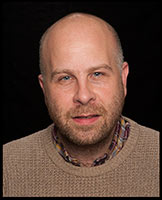Staff profile

| Affiliation | Telephone |
|---|---|
| Lecturer in the Department of Archaeology |
Biography
I am currently employed as a postdoctoral research associate in the Department of Archaeology, Durham University, assisting Professor Sarah Semple with the advancement of new research projects. This is particularly focused on developing a research agenda, post-excavation analyses and new fieldwork at Yeavering in Northumberland, the site of an early medieval palace complex first excavated by Brian Hope-Taylor in the 1950s.
The monumental and landscape context of political assembly in the Danelaw comprised the focus of my PhD as part of The Assembly Project, an international project that examined the relationship between assembly practices and the territorial development of polities in early medieval north-west Europe. This work has latterly been developed into a co-authored article concerning the re-use of barrows in the Journal of the North Atlantic and as part of a forthcoming monograph. In addition to this I have held various roles in the commercial sector over the past decade, spanning field archaeology, buildings archaeology and consultancy, with particular emphasis on GIS and survey (earthwork, architectural, LiDAR, geophysics and photogrammetry).
Research Groups
Landscapes of Complex Societies Research Group
North East Research Group
Research Projects
Yeavering: A Palace in its Landscape
The Assembly Project
Sockburn Project, Co Durham
Corpus of Anglo-Saxon Stone Sculpture
People and Place. The Making of the Kingdom of Northumbria
Research interests
- Archaeology, text and oral tradition (cadastral surveys; legal culture; historical cartography; place names; folklore)
- Cultic activity (cultic practices and their material corollaries; political and economic relations)
- Experimental political landscapes
- Governance (materiality of assembly places, practices and related activities, rural vs urban governance structures and processes)
- Political economy (territoriality of jurisdictions, management of common resources)
- Structuring of space (vernacular and ecclesiastical architecture; settlement layout; settlement patterning)
Publications
Chapter in book
Journal Article
Other (Digital/Visual Media)
- Skinner, A. (2014). The Kadhima Project: Archaeological Survey and Excavation of an Early Islamic Landscape on Kuwait Bay. Preliminary Report on the Fifth Season. [Dataset]
- Blair, A., & Skinner, A. (2012). The Kadhima Project: Archaeological Survey and Excavation of an Early Islamic Landscape on Kuwait Bay. Preliminary Report on the Third Season. [Dataset]
- Skinner, A., & Fitton, T. (2010). The Kadhima Project: Archaeological Survey and Excavation of an Early Islamic Landscape on Kuwait Bay. Preliminary Report on the First Season. [Dataset]
Other (Print)
Report

